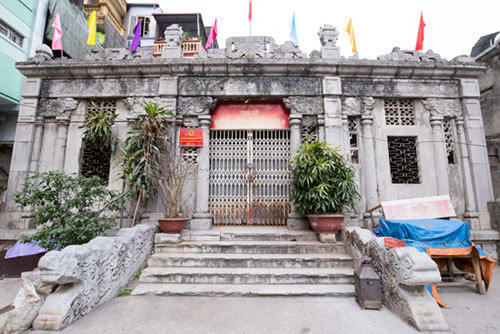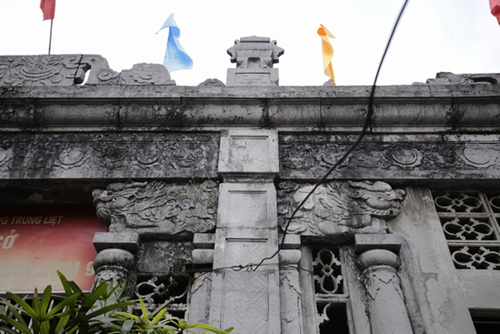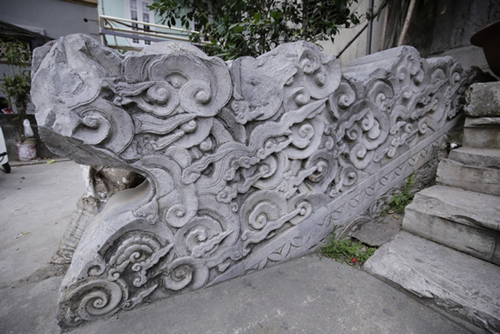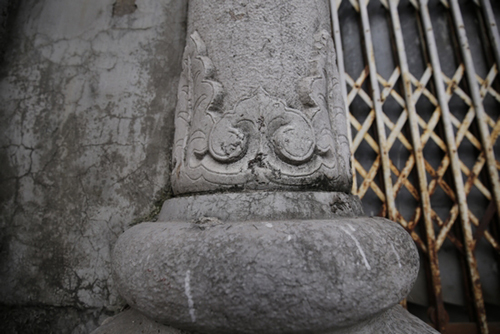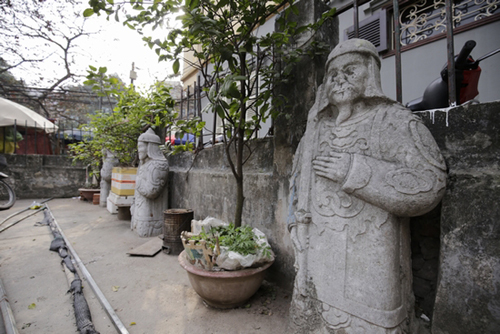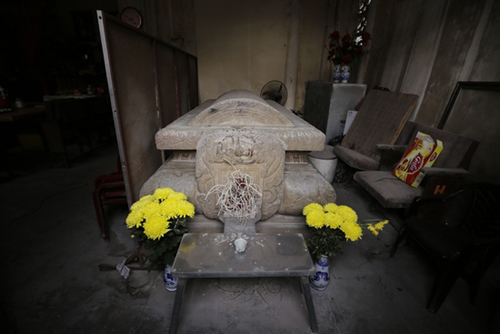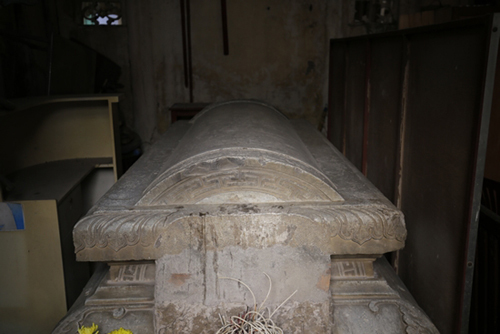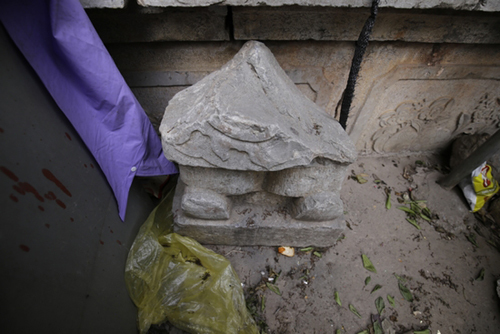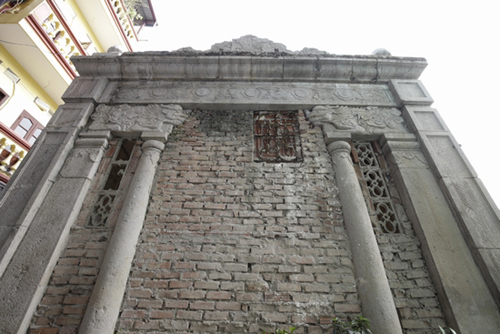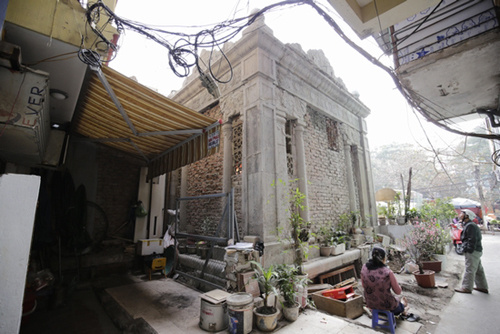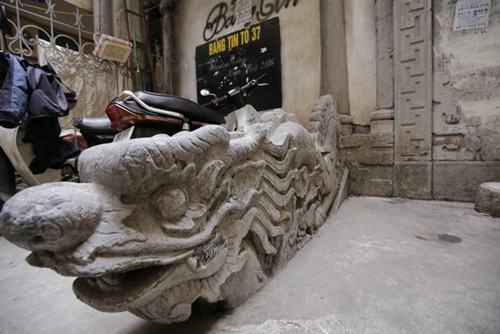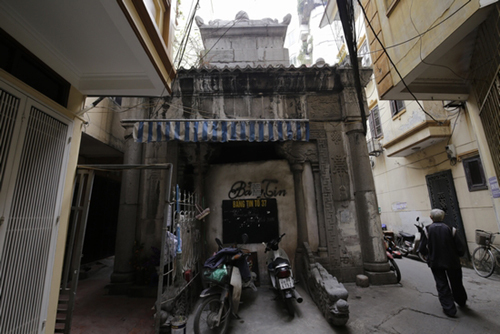Hoang Cao Khai’s tomb area, also known as Thai Ha hamlet (now located at lane 252, Tay Son street, Trung Liet ward, Dong Da district, Hanoi) was built in 1893 by Governor-General Hoang Cao Khai (1850-1933). ). He was a great minister under King Thanh Thai under the Nguyen Dynasty and also a writer and historian of Vietnam.
Tomb area is a complex of relics including mansions, temples, mausoleums… with sophisticated architecture in the art of stone carving of the Vietnamese people. In 1962, this relic was classified as a national relic by the Ministry of Culture, but due to the lack of attention from the functional sectors, for a long time, the relic was almost forgotten, plus it was abandoned by the local people. occupation caused much damage to the relic complex.
The most important work of the relic site is Hoang Cao Khai’s mausoleum, built of white marble, now turned into the patrol headquarters of Residential Cluster 9 of Trung Liet Ward Police. In front of the mausoleum, there used to be two rows of stone soldiers, each row consisted of 4 people holding swords, 1.3m high, now only 3 statues remain and all 3 have lost their legs due to being covered with cement floor, parts of their ears. statue, the arm was also chipped.
Behind Mr. Hoang Cao Khai’s grave is the grave of his son, Hoang Trong Phu. Mr. Phu studied abroad in France, got an engineering degree, then returned to Vietnam, was assigned the position of Governor General of Ha Dong by the Nguyen Dynasty in place of his father.
Mr. Phu also built for himself a giant stone tomb, bigger than his father’s grave, the largest in the North at the beginning of the 20th century.
In this tomb area, there are only the graves of the descendants and relatives of Mr. Hoang Cao Khai. According to the old people, those who are not allowed to be mandarins have only small graves, which are scattered graves before and after two giant stone mausoleums.
No one else is here, so the entire mausoleum area is abandoned, the two giant stone tombs of Mr. Khai and Mr. Phu are also left unattended.
According to some people living nearby, because there was no one to look after, many families had previously moved their graves, occupying land to build houses. However, after a while, these people all met with great disaster, if not fatal, they would also go crazy, sick, fail in business, decline. Therefore, families who occupy land to build houses later do not dare to move graves anymore.
Hoang Cao Khai’s tomb area is located at Lane 252, Tay Son Street, Trung Liet Ward, Dong Da District, Hanoi.
Hoang Cao Khai’s mausoleum, built entirely of white marble in the style of the word “Dinh”, 8m long, 6m high, has now been turned into the patrol headquarters of Residential Cluster No. the campus was turned into a parking lot, storing the goods of the toad market.
In 1962, this relic was classified as a National Monument by the Ministry of Culture. However, many people who have lived around here for a long time do not know that this mausoleum has been ranked
The art of dragon sculpture is very sophisticated. According to many researchers, this mausoleum has a unique architecture, rare in Vietnam
Patterns are carved on chipped pillars, changing color over time
In front of the mausoleum, there used to be two rows of stone soldiers, each row consisted of 4 people holding swords, 1.3m high. But now there are only 3 statues left and all 3 have lost their legs due to being covered by the cement floor.
Inside the mausoleum are the remains of generations of the Royal family of Governor Hoang Cao Khai
The stone tomb is located inside the mausoleum. Underneath the grave is a layer of very hard and thick rock.
Some people say that this is only a fake grave, and someone asserts that the bodies of Mr. and Mrs. Hoang Trong Phu are buried deep in the tomb, under a layer of hard rock that cannot be dug.
Debris littered the yard. Year after year, this monument complex is still subject to the destruction of both time and human hands.
The stone pillars were erected and the brick wall was built to seal the space around the old mausoleum in the past
Although Trung Liet ward also moved several times to remove encroachment and clean up street vendors around the relic, only a short time later, the situation of encroachment recurred.
Not far from Hoang Cao Khai’s tomb is the tomb of Hoang Trong Phu, the eldest son of Hoang Cao Khai. This is also a large stone structure. From 1972 until now, this work has been occupied by three households.
It is not possible to get a panoramic picture of the mausoleum because all directions are obscured by houses crowded together. After parachuting into this mausoleum, all daily activities take place inside the stone coffin in the mausoleum.
Source: Collected internet.
